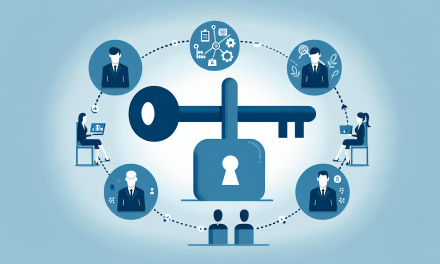Table of Contents
- Understanding Internal Communications
- The Importance of Effective Communication
- Key Elements of Internal Communications
- Barriers to Effective Internal Communication
- Strategies to Improve Internal Communications
- Tools for Evaluation and Feedback
- Frequently Asked Questions
- Conclusion
Understanding Internal Communications
Internal communications refer to the exchange of information and messages within an organization—this includes communication among employees, teams, and management. When done right, these communication strategies not only foster collaboration but also drive engagement and productivity. Thus, understanding how to master these strategies is crucial for any leader.
The Importance of Effective Communication
Effective internal communication bolsters employee morale, enhances organizational culture, and promotes a clear understanding of goals and priorities. Yet, many organizations struggle to communicate effectively. When teams lack clear communication, confusion arises, leading to reduced productivity and increased turnover rates.
Increases Employee Engagement
When organizations prioritize open communication, employees feel valued and included. As a result, they are more likely to engage with their work and contribute innovative ideas. By nurturing a culture of communication, businesses encourage a sense of belonging and purpose among staff members.
Improves Alignment with Strategic Goals
Effective internal communications ensure that everyone within an organization is aware of its goals and objectives. When teams understand what is expected of them, they can align their efforts accordingly, thus working more effectively toward common goals. By using tools such as visual roadmaps, regularly updated newsletters, and team meetings, organizations can keep employees informed and engaged.
Key Elements of Internal Communications
Several core elements contribute to successful internal communications. By focusing on these elements, organizations can create a more cohesive environment for their teams.
Clarity and Consistency
Consistent messaging minimizes confusion and aligns the team. When everyone receives the same message, it fosters unity and trust. Therefore, organizations must ensure that what they communicate is clear, concise, and accessible.
Two-Way Communication
Encouraging feedback and dialogue creates an interactive communication framework. When leaders listen to their teams, they demonstrate that every voice matters. This two-way communication not only provides valuable insights but also cultivates trust and loyalty among employees.
Use of Multiple Channels
Different teams and individual employees may prefer different communication styles. Therefore, utilizing a mix of communication channels—such as emails, meetings, intranet platforms, and instant messaging—ensures that everyone receives information in a way that resonates with them. Organizations may also consider implementing a dedicated internal communication tool to streamline this process.
Barriers to Effective Internal Communication
While many organizations strive for effective internal communications, several obstacles may hinder their efforts.
Lack of Leadership Engagement
Leaders who do not actively participate in communication can create a disconnect within teams. When employees feel that their leadership is disengaged, it erodes trust and can lead to low morale.
Information Overload
On the flip side, too much information can overwhelm employees. When inundated with messages, they may struggle to discern what is essential, leading to frustration and disengagement. Thus, it becomes imperative to filter communication effectively, delivering only relevant content.
Cultural Differences
In diverse workplaces, cultural differences might create misunderstandings. Sensitivity to these differences fosters an inclusive environment and supports better communication practices. Organizations benefit by providing cultural sensitivity training and encouraging an atmosphere of respect.
Strategies to Improve Internal Communications
Now that we have addressed the importance of internal communications and potential barriers, let’s explore actionable strategies for improvement.
Invest in Training
To cultivate effective communication, organizations should invest in their employees’ communication skills. Consider certifications like the Strategic Internal Communications Masterclass Certification that equip employees with the tools they need to communicate effectively. Such training can reinforce the importance of communication while enhancing individual skills.
Promote a Culture of Openness
Encouraging open dialogue helps dismantle hierarchy and promotes trust. Establish regular forums, town halls, or open-door policies where employees can voice their ideas and concerns. Therefore, leaders play a pivotal role by modeling openness and accessibility.
Utilize Technology Effectively
Technology can streamline communication processes significantly. By using tools like collaboration software, project management apps, and communication platforms, organizations can create cohesive environments where teams work together seamlessly.
Choose the Right Communication Tools
Selecting the right tools is paramount. Evaluate the needs of your teams and choose platforms that offer the best functionality for collaboration and transparency. Regularly assess these tools to ensure they continue to meet the evolving needs of the organization.
Tools for Evaluation and Feedback
Finally, continuous evaluation of communication strategies helps organizations adapt and grow. Employing various tools allows for better insights into how communication is perceived.
Surveys and Polls
Conducting employee surveys or polls can provide valuable feedback regarding internal communication practices. Surveys help identify areas of improvement, and recurring polls can gauge employees’ sentiments on various initiatives.
Focus Groups
Organizing focus groups helps gather qualitative data. Bringing together employees from different departments or levels can encourage rich discussions, revealing insights that may otherwise remain unheard. These discussions can help develop tailored strategies that fit the organization’s culture.
Frequently Asked Questions
What is the most effective way to communicate with employees?
There is no one-size-fits-all answer. However, utilizing a combination of different communication channels—such as emails, meetings, and instant messaging—alongside encouraging open dialogue tends to promote more effective communications.
How can I improve employee engagement through communication?
Prioritize transparency, nurture two-way communication, and actively seek feedback from employees. Regularly recognize contributions, share successes, and encourage dialogue about ideas or concerns.
Conclusion
Mastering effective internal communication strategies is an ongoing process that can significantly impact an organization’s success. By focusing on clarity, two-way conversations, and the appropriate use of technology, businesses can foster a culture of openness that drives engagement and productivity. Additionally, utilizing resources like this guide on mastering effective internal communication strategies can provide more insights. As organizations invest in their communication strategies, they nurture a more cohesive and productive environment, ultimately leading to greater achievements.
For those looking to enhance their communication abilities, additional resources can be found through these links: Master Advanced Negotiation and Dispute Resolution Skills, Enhance Personal Effectiveness through Positive Skills, Unlock Your Potential: Effective Personal Productivity, and Sharpen Your Influencing and Communication Skills Today. These tools and strategies will not only improve internal communication but will also stimulate professional growth and success.





